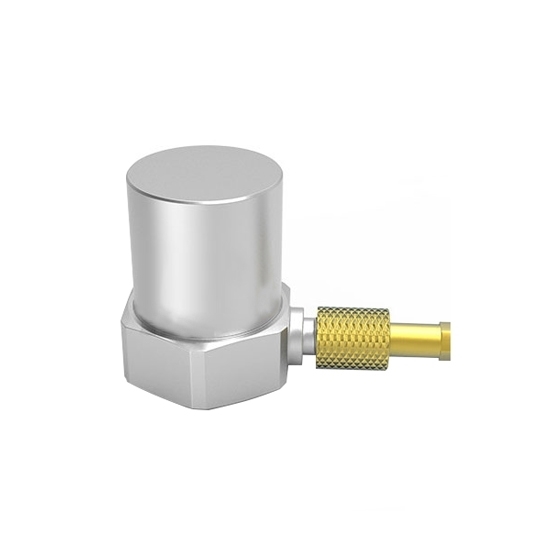
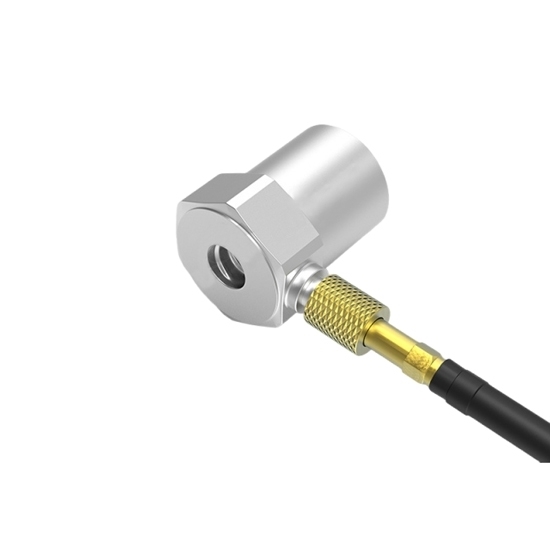
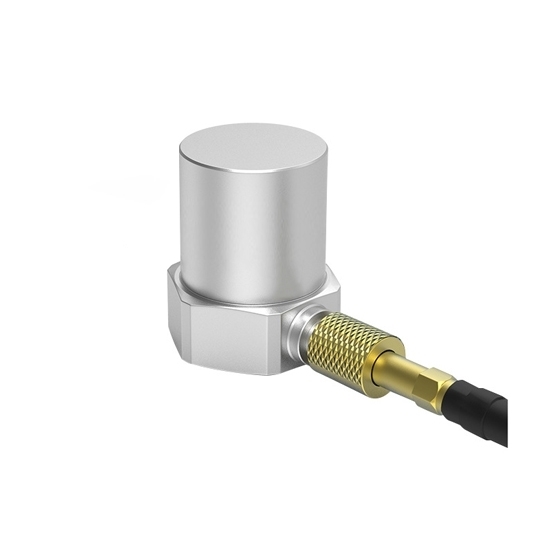
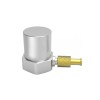
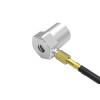
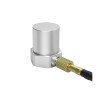
- Stock: In Stock
- Model: RDDLZ-AS-PC015
- Weight: 1.00
- SKU: RDDLZ-AS-PC015
Available Options
Designed for high-frequency vibration measurements, the PE piezoelectric accelerometer has a wide frequency response range from 0.3 Hz to 3000 Hz, and can measure in the range of 150 g (1500 m/s² peak) with a maximum transverse sensitivity of no more than 5%. This PE accelerometer sensor with piezoelectric is suitable for vibration analysis, machine monitoring and scientific research. The output method is lateral L5 and has a high immunity to interference.
Specifications
| Model | RDDLZ-SAPC0015 |
| Axial Sensitivity | 500pC/g (20±5°C) |
| Measuring Range | 150g (1500m/s2 peak) |
| Maximum Lateral Sensitivity | ≤5% |
| Frequency Response | 0.3 to 3,000 Hz (See frequency response curve) 10% |
| Mounting Resonance Frequency | 10000 Hz |
| Output Method | Side L5 |
| Temperature Response | See temperature curve |
| Polarity | Positive (Acceleration direction from bottom to sensor) |
| Insulation Resistance | >109Ω |
| Capacitance | ~2000pF |
| Operating Temperature Range | -40°C~+150°C |
| Transient Temperature | 3mg/°C (0.3Hz) |
| Magnetic Sensitivity | 1g/T |
| Base Strain | 0.2mg/με |
| Weight | 50g |
| Case Material | Stainless steel |
| Mounting | M5 |
| Sensitive Material | Piezoelectric ceramic |
| Structural Design | Planar shear |
| Accessories | Transducer certificate of conformity (calibration parameters, frequency response curve) |
| M5, M5/M8 bolts, protective caps | |
| 2m double-ended L5 STYV-1 |
Features
- Universal PE accelerometer sensors are suitable for vibration monitoring of various industrial equipment and are widely used for low frequency vibration detection.
- Piezoelectric acceleration sensors are characterized by high cost performance and superior sensitivity, ensuring accurate vibration data acquisition.
- No need for external power support, utilizing the piezoelectric effect to achieve efficient signal conversion and output.
Dimension (unit: mm)
Typical Frequency Response Curve
Temperature Curve
Application
Tips: How do PE accelerometer sensor work?
PE accelerometer sensors detect motion or vibration by measuring the acceleration of an object. RDDLZ PE accelerometers utilize the piezoelectric effect (PE) to convert physical changes in acceleration into electrical signals. The piezoelectric material inside the acceleration sensor generates charges when subjected to acceleration, and these charges are amplified by a circuit that outputs an electrical signal proportional to the acceleration for subsequent processing.
PE accelerometers should be mounted in such a way that they fit securely on the object to be measured to avoid inaccurate measurements due to improper mounting. The mounting surface should be flat to ensure good contact between the acceleration sensor and the surface. Depending on the application scenario, it is also necessary to select the appropriate sensor model and measurement range.
